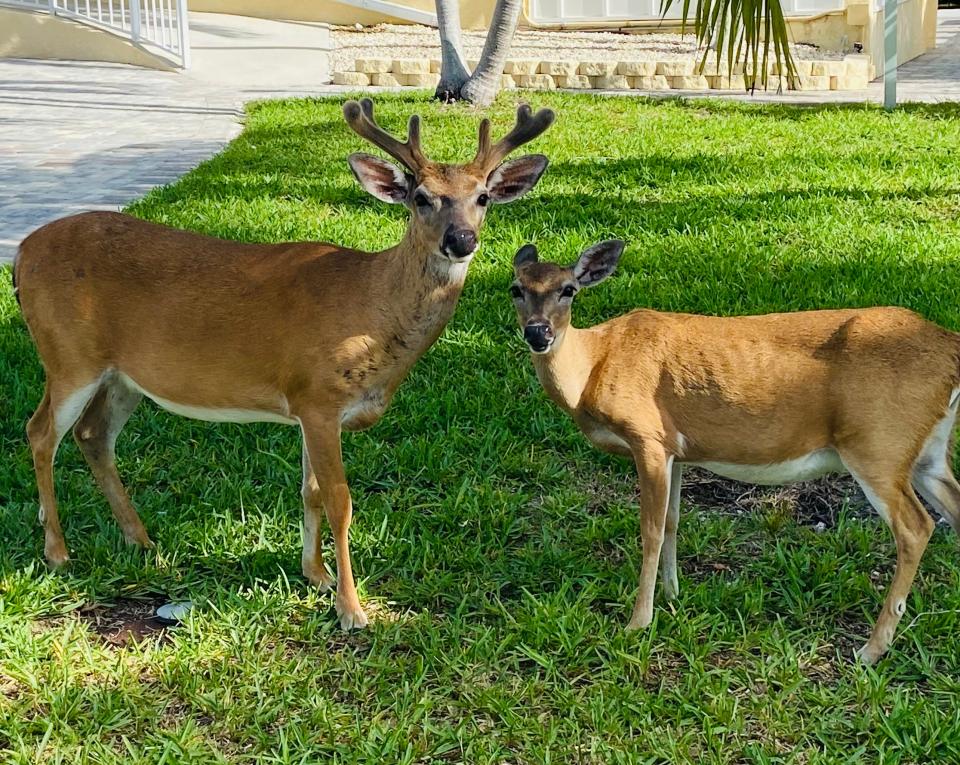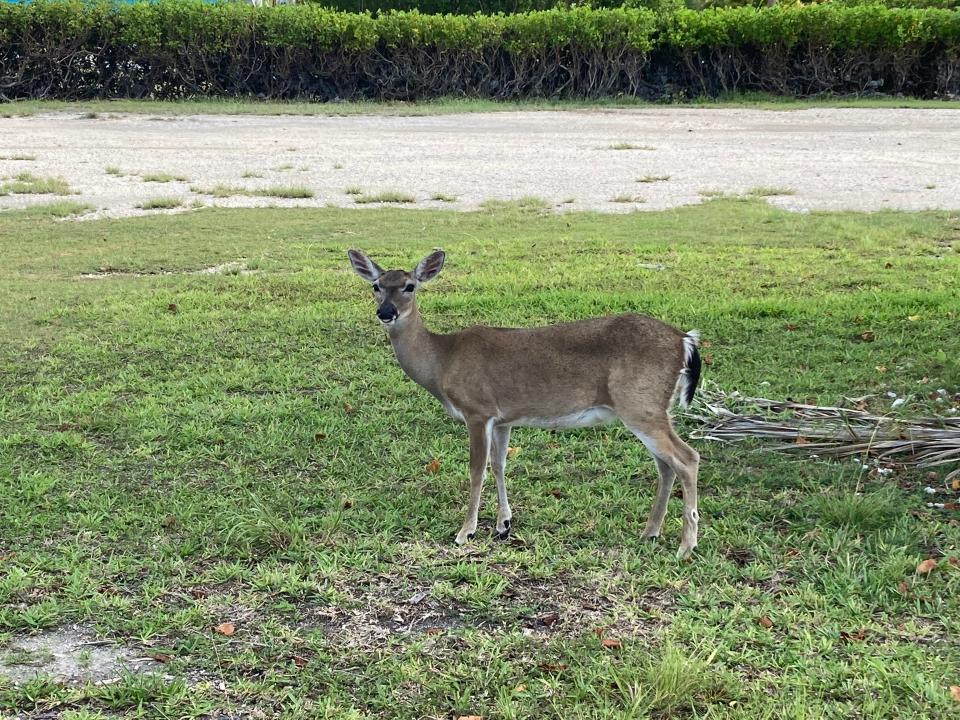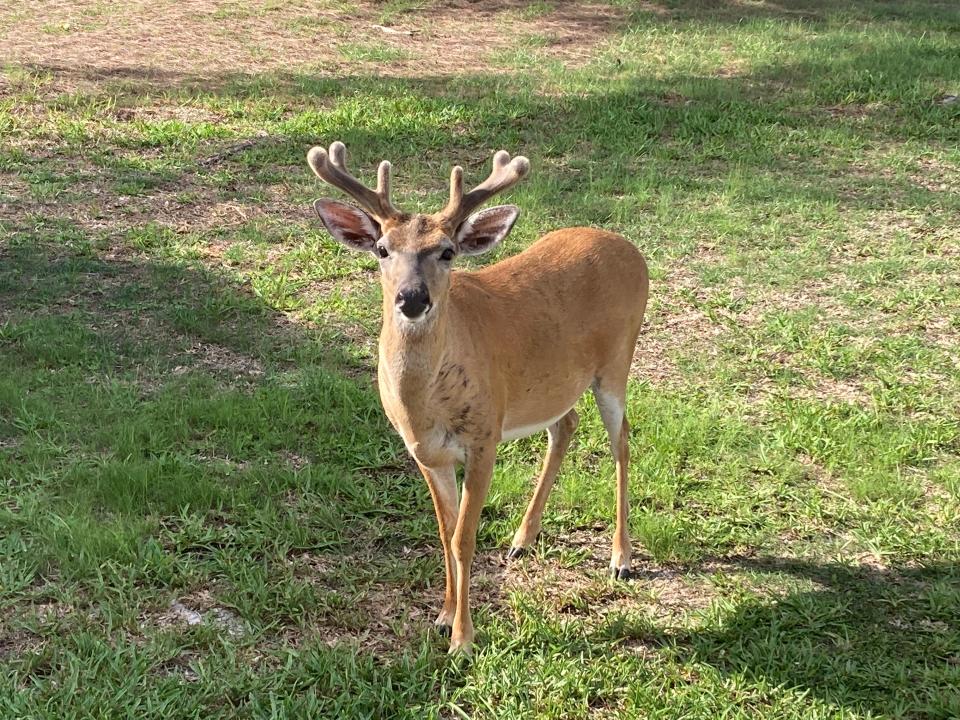NANCE: Key Deer population is now stable ... just don't feed them

My best parental judgment wasn’t exactly on display while marching my 10-year-old twins on a Duval Crawl on Father’s Day. Albeit, it was daylight, and the full Key West depravity wasn’t as forceful, but there were still the storefronts with vulgar political banter and suggestive T-shirts.
I idly sat back while they commandeered a pool table at Capt. Tony’s, a legendary locale that had once served as a morgue and later a watering hole for celebs and rogues. And they may or may not have been allowed tiny tastes of a Key Lime Colada or Goombay Smash.
Python Challenge: The Florida Python Challenge is back for another run
Bear hunting: Bear hunting is poorly understood in Florida
Bay scallops: Researchers provide some insight into the ol' bay scallop
But, I drew the line at them feeding Key Deer. Granted, the deer weren’t on Key West. No, this was after we escaped to the No Name Pub on Big Pine for an early dinner, where the resident herd was easy to spot in the neighbors’ yards or ambling down the roads. They were dying to feed a deer, but signs everywhere suggested that we not, and I, being the good parent, obeyed.
This was our first trip to Big Pine to visit the Key Deer in five years. While the kids have grown, the deer haven’t, but I was pleased to see these diminutive whitetails were still pressing onward in this jungle of mangroves and homes.

For those unaware, Key Deer are the smallest of the ubiquitous whitetail subspecies and found only in the Florida Keys, primarily in Big Pine and No Name Keys. Listed as Federally Endangered, their population is now considered stable with estimates ranging between 800-1,000 animals.
But, once upon a time, they were over-hunted, and habitat destruction led to the point that only an estimated 50 deer survived by the 1940s. The establishment of the National Key Deer Refuge in 1957 conserved necessary habitat while protections such as highway fencing and strict speed limits helped the Key Deer bounce back over the ensuing decades.
Still, their existence is seemingly always in peril in this gorgeous subtropical but unforgiving environment. Our last visit had been on the heels of the screwworm outbreak of 2016-17. These flesh-eating maggots, a type of fly larvae, fed on the live deer. One source totaled 135 animals suffering this gruesome end. Only through a Herculean effort by several government agencies, the infestation was halted with no apparent long-term damage to the Key Deer. But swiftly losing around 15% of the population sent chills through those in charge of managing the deer.

With the screwworm threat eliminated, vehicle strikes resumed their spot as the top Key Deer killer, which is mostly why feeding Key Deer is illegal. Aside from pizza crusts and French fries not being a staple of their healthy diet, feeding deer habituates them to humans, which is especially dangerous when they’re fed from the roads. Also, where they congregate to be fed deer transmit diseases and parasites more freely.
So, feeding deer isn’t a personal threat to life or limb like when tourists leave their vehicles in Yellowstone only to be trampled by a bison. These things weigh 80 pounds soaking well, let’s get real. No, it’s simply bad for the deer.

As such, Dad played the stick in the mud and wouldn’t let the kids feed the deer that munched on weeds along the back roads between A1A and the No Name Pub, though I endured an earful of complaining for toeing the line. But, we took plenty of photos of bucks and does, including a few spotted fawns which then begged the questions of whether we could take one home for a pet.
In that event, their follow-up visit to Key West would've been to bail me out of the Monroe County Detention Center, which is where I probably belonged after that day anyway.
For more information on Key Deer and the National Key Deer Refuge, please visit www.fws.gov/refuge/national-key-deer
This article originally appeared on The Ledger: NANCE: Key Deer population is now stable ... just don't feed them

